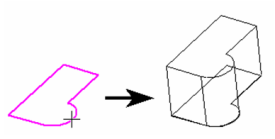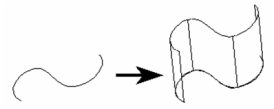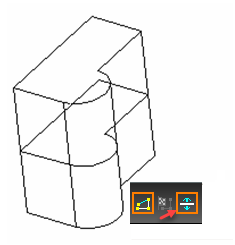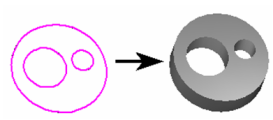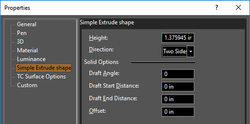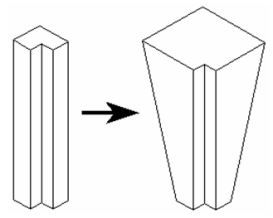Creates a 3D object by extruding (sweeping) a 2D open or closed profile along a path normal to the workplane of the 2D object. If you extrude an open profile, a surface will be created.
1. If you want to select only a simple (single-object) curve, make sure Use Compound Profile is not selected.
2. If you want to use a compound profile, which is a series of connected lines and/or arcs, select Use Compound Profile.
3. If necessary, select Finish Selection of Profile to continue.
4. Select the 2D open or closed profile to extrude. Move the mouse to extrude the profile, or enter a value in the Height field of the Inspector Bar.
If you select an open profile, the resulting 3D object will be a surface.
If you select , the solid extrusion will be created on either side of the profile.
Extruding Multiple Profiles
You can also select multiple closed regions, or profiles, to extrude all at one time.
Make sure Use Compound Profile is selected. Select the first profile, then press Shift to select additional profiles. Each profile is extruded the same distance.
If you select nested regions, you can create islands, and regions within islands.
...
The Properties window of an extrude object contains a Simple Extrude Shape page, in which you can set parameters defining how the object is created.
Height: The distance of the extrusion.
Direction: Switch between one-sided and two-sided.
Solid Options: For these parameters to be accessible, the extrude must be created as a solid.
Draft Angle: Creates an extrusion of increasing or decreasing cross-section. Enter the angle of deviation from the extrusion path.
Draft Start / End Distance: If Draft Angle = 0, you can specify a draft angle by entering the offset distances.
Offset: Creates a hole in the extrusion at a distance from the outside of the extrusion equal to the Offset value.
For TC Surface Options, see TC Surface Properties
...
